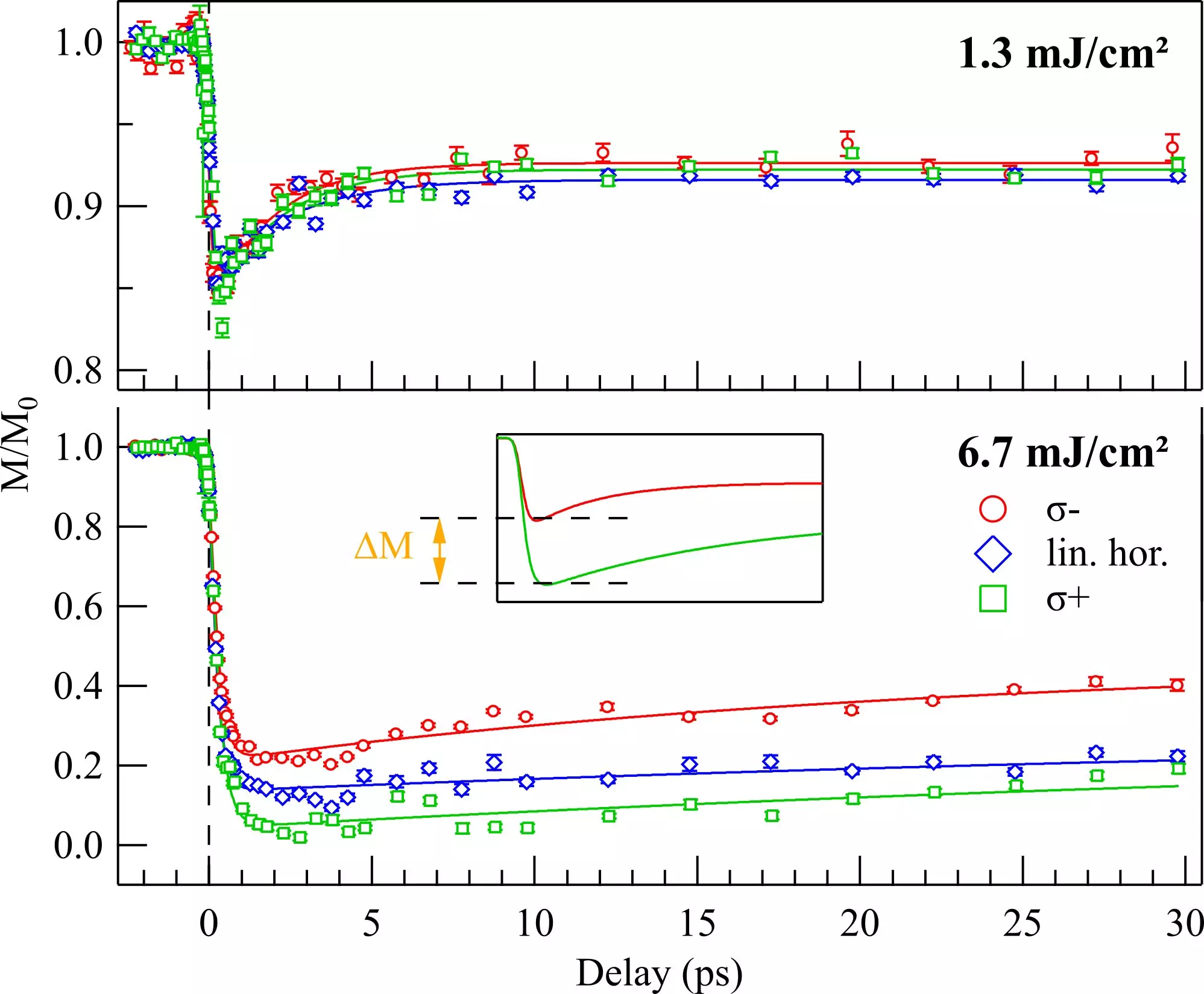The ability to manipulate magnetization on ultrafast time scales using intense laser pulses has long been a goal of researchers in the field of ultrafast magnetism. Traditionally, such manipulation has been achieved through thermally induced effects, where the absorption of laser energy leads to rapid heating of the material and perturbation of the magnetic order. However, a recent study by scientists from the Max Born Institute (MBI) and an international team of researchers has demonstrated a new non-thermal approach to generating large magnetization changes using circularly polarized extreme ultraviolet (XUV) radiation.
The key to this non-thermal approach lies in the inverse Faraday effect (IFE), a phenomenon that allows for the direct interaction between the polarization of light and the magnetic moments in a material. Unlike traditional thermal effects, the IFE does not rely on electronic heating induced by light absorption but rather on the coherent interaction between the light’s polarization and the electronic spins. This novel approach opens up new possibilities for manipulating magnetization without the heat load associated with traditional methods, making it particularly promising for applications requiring fast repetition rates, such as read/write-operations in future data storage technologies.
Experimental Demonstration
In their study, the researchers used circularly polarized femtosecond pulses of XUV radiation to demonstrate the IFE-induced magnetization in a metallic ferrimagnetic iron-gadolinium (FeGd) alloy. The high photon energy of the XUV radiation allowed for resonant excitation of tightly bound core-level electrons, which in turn facilitated the generation of large opto-magnetic effects. By varying the XUV photon energies around the Fe M3,2 core-level resonance, the scientists were able to achieve significant changes in magnetization, reaching up to 20-30% of the ground-state magnetization of the alloy. Importantly, these effects could not be explained by a purely thermal helicity-dependent mechanism, highlighting the unique nature of the IFE-induced magnetization.
The findings of this study have significant implications for the fields of ultrafast magnetism and spintronics, offering a new and efficient method for generating large magnetization changes on ultrafast time scales. In addition to providing insights into coherent magnetization control and the science of nonlinear X-ray matter interactions, the non-thermal approach demonstrated in this study has the potential to advance the development of next-generation data storage technologies and other applications requiring precise control over magnetization dynamics.
The ability to manipulate magnetization using non-thermal approaches represents a significant advancement in the field of ultrafast magnetism. By harnessing the power of circularly polarized XUV radiation and the inverse Faraday effect, researchers have demonstrated a new pathway for generating large magnetization changes on ultrafast time scales. As this research continues to evolve, the potential impact on various technological applications is immense, paving the way for enhanced control over magnetization dynamics and the development of novel materials and devices.


Leave a Reply